Acetaminophen (Paracetamol)
Introduction
Paracetamol (or acetaminophen) is a familiar analgesic, a drug that is used to relieve pain. It can also be used to reduce fever and some kinds of headaches. This creates an antipyretic, something that reduces fevers. It is employed in many drugs that treat the flu and colds. The words acetaminophen and paracetamol both come from the names of the chemicals utilized in the compound: N-acetyl-para-aminophenol and para-acetyl-amino-phenol. Occasionally, it is shortened to APAP, for N-acetyl-para-aminophenol.
Harmon Northrop Morse was the foremost to make Paracetamol, in the year 1878. Drugs made with Paracetamol became often in the 1950s. Today, these drugs are some of the most prescribed, together with those including salicylic acid or Ibuprofen. In the year 1977, Paracetamol was put on the Checklist of Essential Medicines of the WHO.
Acetaminophen 325 mg tablet
- Color: white
- Shape: round
- Imprint: L403 325MG
- Formula: C8H9NO2
- Molar mass: 151.163 g/mol
- Density: 1.26 g/cm³
- Melting point: 169 °C
- CASE ID: 103-90-2
- IUPAC ID: N-(4-hydroxyphenyl)acetamide, N-(4-hydroxyphenyl)ethanamide
- Soluble in: Water, Acetone
This medicine is a white, round, partly scored, tablet imprinted with “L403” and “325MG”.
Brand – OTC medicine brands that contain acetaminophen
- Tylenol®
- NyQuil®/DayQuil®
- Excedrin®
- Alka-Seltzer Plus®
- Mucinex®
- Robitussin®
- Goody’s®
What is the dosage of acetaminophen?
Dosages of Acetaminophen Should Be Given As Follows: Grown-up Dosage Forms & Strengths
Tablets
- 325 mg
- 500 mg
Caplets
- 325 mg
- 500 mg
- 650 mg
Capsules
- 500 mg
Gelcaps/Geltabs
- 500 mg
Caplets, Extended Release
- 650 mg
Tablets, Chewable
- 80 mg
Oral solution/suspension
- 160 mg/5 mL
- 80mg/0.8mL (oral drops)
Liquid Oral
- 500mg/5mL
- 160mg/15mL
- 500mg/15mL
Oral Syrup
- 160mg/5mL
Elixir
- 160mg/5mL
Acetaminophen Dosages By Weight
Doctors recommend utilizing a child’s weight instead of age when figuring out how much medicine to give. Before giving your kid a dose, check the label to make sure the recommended dosage and concentration agree with the digits below. This table is based on doctors’ and manufacturers’ recommendations. It is not intended to substitute the advice of a doctor. If your child is 2 years aged or younger, get the ok from your healthcare professional before providing the medicine. And always contact me if you have any questions or concerns about giving medicine.
Weight Acetaminophen Liquid
(160 mg/5 ml)
- 6-11 lbs – (0-3 months) Ask your doctor
- 12-17 lbs – (4-11 months) Ask your doctor
- 18-23 lbs – (12-23 months) Consult your doctor
- 24-35 lbs – (2-3 years) 1 teaspoon (5 ml, or full 5-ml dosing syringe)
- 36-47 lbs – (4-5 years) 1½ teaspoons (7.5 ml)
- 48-59 lbs – (6-8 years) 2 teaspoons (10 ml)
- 60-71 lbs – (9-10 years) 2½ teaspoons (12.5 ml)
- 72-95 lbs – (11 years) 3 teaspoons (15 ml)
Weight Acetaminophen Jr. Strength Chewables
(160 mg)
- 24-35 lbs – (2-3 years) 1 tablet
- 36-47 lbs – (4-5 years) 1½ tablets
- 48-59 lbs – (6-8 years) 2 tablets
- 60-71 lbs – (9-10 years) 2½ tablets
- 72-95 lbs – (11 years) 3 tablets
What is acetaminophen?
Acetaminophen is the generic name for a medicine used to reduce pain and fever that is found in many prescription and over-the-counter (OTC) drug products. It is available alone in single-ingredient products and also in combination with other medicines, including those used to treat colds, coughs, allergies, and sleeplessness. Acetaminophen is one of the most widely employed medicines in the United States.
How to use Acetaminophen
- Take this product by mouth as directed. Follow all directions on the product package. If you have any questions, request your doctor or pharmacist.
- There are many labels and forms of acetaminophen available. Read the dosing education carefully for each outcome because the amount of acetaminophen may be different between products. Do not take more acetaminophen than suggested. (See also the Warning province.)
- If you are giving acetaminophen to a kid, be sure you use a product that is meant for children. Utilize your child’s weight to find the right dose on the product package. If you do not know your kid’s weight, you can also use their age.
- For breaks, shake the medication well before each dose. A few liquids do not need to be shaken before usage. Observe all directions on the product package. Measure the liquid medication with the provided dose-measuring spoon or dropper or syringe to make sure you have the correct dose. Do not utilize a household spoon.
- For rapidly-dissolving tablets, chew or permit them to dissolve on the tongue, then swallow with or without water. For chewable tablets, chew comprehensively before swallowing.
- Do not crush or chew extended-release tablets. Doing so may also release all of the drugs at once, increasing the risk of side effects. Swallow the tablets whole. For animated tablets, dissolve the dose in the recommended amount of water, then drink. Pain medications work best if they are used as the first signs of pain appear. If you wait until the symptoms have worsened, the medication may not perform as well.
- Do not take this medicine for fever for more than 3 days unless directed by your doctor. For grown-ups, do not take this product for pain for more than 10 days (5 days in youngsters) unless directed by your doctor. If the kid has a sore throat (especially with high fever, headache, nausea, or vomiting), confer with the doctor promptly.
- Advise your doctor if your condition lasts or gets worse or if you develop new symptoms. If you think you may also have a serious medical problem, get medical help right away.
Mechanism of Action
Acetaminophen, also named N-acetyl para-aminophenol (APAP) or paracetamol, is one of the most widely utilized over-the-counter analgesic and antipyretic agents. Although its accurate mechanism of action remains unclear, it is historically organized along with Non-Steroidal Anti-Inflammatory Drugs (NSAIDs) because it impedes the cyclooxygenase (COX) pathways. Like NSAIDs, acetaminophen has analgesic and antipyretic belongings. Yet, investigations have revealed that acetaminophen lacks peripheral anti-inflammatory properties.
Acetaminophen might also impede the COX pathway in the central nervous system but not peripheral tissues. Further, acetaminophen does not appear to attach to the active site of either the COX-1 or COX-2 enzyme; instead, it decreases the activity of COX by a different mechanism. It also has been theorized that acetaminophen impedes a splice variant of COX-1, also called COX-3, but this has not been confirmed in humans.
Regardless, the deduction of the COX pathway activity by acetaminophen is thought to inhibit the synthesis of prostaglandins in the central nervous system, showing its analgesic and antipyretic effects. The analgesic properties may also be due to a stimulating effect on the descending serotonergic courses in the central nervous system (CNS). Other analyses have suggested that acetaminophen or one of its metabolites, e.g., AM 404, also can activate the cannabinoid system e.g., by inhibiting the uptake or degradation of anandamide and 2-arachidonoylglyerol, contributing to its analgesic action.
Administration
Acetaminophen can also be administered orally, rectally, or intravenously (IV).
- Oral: Acetaminophen is known as a tablet, capsule, syrup, oral solution, or suspension.
- Rectal: Acetaminophen is unrestricted as a rectal suppository for both adult and pediatric patient populations.
- Intravenous: Acetaminophen also reaches as an IV infusion for administration.
Tompkins D. et al. studied the magazines on the efficacy of intravenous (IV) acetaminophen in postoperative pain control. The investigators found a scarcity of evidence for the efficacy of IV acetaminophen when comparing oral or rectal acetaminophen, opioid analgesics, NSAIDs, or placebo in abdominal, gynecologic, genitourinary, orthopedic, neurosurgical, cardiac, renal surgeries. The researchers believe that IV acetaminophen has narrow clinical benefits versus oral or rectal administration.
Acetaminophen reaches as a tablet, chewable tablet, capsule, suspension or solution (liquid), extended-release (long-acting) tablet, and orally disintegrating tablet (tablet that dissolves quickly in the mouth), to take by mouth, with or without food. Acetaminophen is obtainable without a prescription, but your doctor may prescribe acetaminophen to treat certain conditions. Observe the directions on the package or medicine label, and ask your doctor or pharmacist to clarify any part you do not understand. If you are providing acetaminophen to your child, read the package label carefully to make sure that it is the right creation for the age of the child. Do not give youngsters acetaminophen products that are made for adults. A few products for adults and older kids may contain too much acetaminophen for a younger child. Review the package label to find out how much medication the child needs. If you comprehend how much your child weighs, give the dose that matches that weight on the chart. If you do not know your kid’s weight, give the dose that matches your child’s age. Request your child’s doctor if you don’t know how much medicine to give your child.
Acetaminophen comes in a mixture with other medications to treat cough and cold symptoms. Ask your doctor or pharmacist for directions on which product is best for your symptoms. Check nonprescription cough and cold product labels carefully before utilizing two or more products at the same time. These products may also contain identical active ingredient(s) and taking them together could cause you to obtain overdose. This is especially necessary if you will be giving cough and cold medications to a child. Consume the extended-release pills whole; do not split, chew, crush, or dissolve them. Put the orally disintegrating tablet (‘Meltaways’) in your mouth and permit it to dissolve or chew it before swallowing.
Vibrate the break well before each use to mix the medication evenly. Consistently utilize the measuring cup or syringe provided by the manufacturer to measure each dose of the solution or suspension. Do not switch dosing devices between various products; always use the device that comes in the product packaging. Stop taking acetaminophen and reach your doctor if your symptoms get worse, you develop new or unexpected symptoms, including redness or swelling, your pain stays for more than 10 days, or your fever gets worse or stays more than 3 days. Also, stop delivering acetaminophen to your child and call your child’s doctor if your child develops new symptoms, including redness or swelling, or your child’s pain lasts for longer than 5 days, or your fever gets more threatening or lasts longer than 3 days. Do not give acetaminophen to a kid who has a sore throat that is severe or does not go away, or that happens along with fever, headache, rash, nausea, or vomiting. Reach the child’s doctor right away, because these symptoms may be signs of a more serious condition.
How do I know if the outcome I am taking has acetaminophen in it?
Constantly check the Drug Facts title on the packaging of over-the-counter (OTC) medicines to notice if acetaminophen is listed as an active ingredient. On OTC drugs, the phrase “acetaminophen” arises on the front of the package and the Drug Facts label under the Active Ingredient(s) section. On prescription drugs, the label can spell out acetaminophen or it may also have a condensed version of it, such as “APAP,” “acet,” “acetamin,” or “acetaminoph.” If you are not sure if your medicine includes acetaminophen, request a pharmacist or your health care professional for additional information. Express all your health care specialists if you have a history of serious skin responses with acetaminophen so they do not specify any medicines containing the drug.
Does Acetaminophen Interact with other Medications?
Severe Interactions
These medications are not usually taken together. Confer your healthcare professional (e.g., doctor or pharmacist) for more information. Sorry, we have no data available. Please contact your doctor or pharmacist.
Serious Interactions
These medications can also interact and cause very damaging effects. Confer your healthcare professional (e.g., doctor or pharmacist) for more details.
- ACETAMINOPHEN; NSAIDS/ALPROSTADIL
- ACETAMINOPHEN/SODIUM FUSIDATE
Moderate Interactions
These medications may also generate some risks when taken together. Confer your healthcare professional (e.g., doctor or pharmacist) for more information.
- ACETAMINOPHEN/ISONIAZID
- ACETAMINOPHEN/BUSULFAN
- ACETAMINOPHEN/SELECTED ANTICOAGULANTS
Side Effects
See also the Warning section. This drug usually has no side consequences. If you have any unusual effects, reach your doctor or pharmacist promptly. If your doctor has directed you to utilize this medication, remember that your doctor has ruled that the benefit to you is greater than the risk of side effects. A few individuals employing this medication do not have serious side effects. A very serious allergic response to this medication is rare. Yet, get medical help right away if you notice any symptoms of a serious allergic reaction, including rash, itching, or swelling (particularly of the face or tongue, or throat), severe dizziness, or trouble breathing. This is not a whole list of potential side outcomes. If you detect other effects not listed above, contact your doctor or pharmacist.
Acetaminophen Side Effects by Likelihood and Severity
Common side effects
- If experienced, these tend to include a Severe expression – Sorry, we have no data available. Please contact your doctor or pharmacist.
- If experienced, these manage to have a Less Severe expression – Sorry, we have no data available. Please contact your doctor or pharmacist.
Infrequent side effects
- If participated, these tend to have a Severe expression – Abnormal Liver Function Tests
- If experienced, these manage to have a Less Severe expression – Sorry, we have no data available. Please contact your doctor or pharmacist.
Rare side effects
If experienced, these tend to have a Severe expression
- Decreased Blood Platelets
- Very Low Grades Of Granulocytes, A Type Of White Blood Cell
- Low Levels Of White Blood Cells
- Low Levels Of A Type Of White Blood Cell Called Neutrophils
- Vocal Cord Swelling
- Acute Liver Failure
- Damage To The Liver And Inflammation
- Inflammation Of The Skin Due To An Allergy
- A Skin Condition With Blistering And Peeling Skin Called Toxic Epidermal Necrolysis
- A Skin Disease With Blistering And Peeling Skin Called Stevens-Johnson Syndrome
- A Type Of Allergic Reaction Yelled Angioedema
- A Type Of Bumpy Skin Rash Named A Maculopapular Rash
- A Kind Of Skin Disorder Called Acute Generalized Exanthematous Pustulosis
If experienced, these tend to include a Less Severe expression
- Erythema Or Redness Of Skin Or Mucous Membrane Swarms
- A Skin Rash
Uses
This drug is used to feast mild to moderate pain (from headaches, menstrual periods, toothaches, backaches, osteoarthritis, or cold or flu aches and pains) and to relieve fever.
Precautions and Interactions
See even the Warning section. Before accepting acetaminophen, tell your physician or pharmacist if you are allergic to it; or if you have any additional allergies. This product may also have inactive ingredients, which can provoke allergic reactions or other problems. Talk to your pharmacist for additional details. Before utilizing this product, tell your doctor or pharmacist your medical history, particularly of: liver disease, and regular help or misusage of alcohol.
Liquid outcomes, chewable tablets, or dissolving or effervescent tablets and powders can also have sugar or aspartame. Caution is advised if you have diabetes, phenylketonuria (PKU), or any other condition that needs you to limit or avoid these substances in your diet. If you have any of these conditions, request your physician or pharmacist about using these consequences safely. Tell your physician if you are expectant before using this medication. Acetaminophen gives into breast milk. Consult your doctor before breastfeeding.
Drug interactions may also adjust how your medications work or increase your risk for severe side effects. This document does not include all possible drug interactions. Keep a checklist of all the products you use (including prescription or nonprescription drugs and herbal products) and share it with your doctor and pharmacist. Do not start, stop, or alter the dosage of any medications without your doctor’s permission. Some products that may interact with this drug are ketoconazole and levoketoconazole. This medication may also interfere with certain laboratory tests, perhaps causing false test results. Make certain laboratory personnel and all your doctors understand you employ this drug.
Overdose
If someone has overdosed and has serious symptoms such as handing out or trouble breathing, call 911. Otherwise, contact a poison management center right away. US residents might call their local poison control center. Canada residents can also contact a provincial poison control center. Symptoms of overdose may include nausea, vomiting, loss of appetite, sweating, stomach or abdominal pain, extreme tiredness, yellowing eyes or skin, and dark urine.
Notes
Acetaminophen does not induce stomach and intestinal ulcers that NSAIDs such as aspirin, ibuprofen, and naproxen may cause. Yet, acetaminophen does not decrease swelling (inflammation) as the NSAIDs do. Confer your doctor for more points and to see which medication might be right for you.
Missed Dose
If you are taking this medication on a regular schedule and forgot a dose, take it as soon as you remember. If it is near the period of the next dose, skip the missed dose. Take your next dose at the normal duration. Do not crease the dose to seize up.
Storage
Store at room temperature away from light and/or moisture. Do not keep it in the bathroom. Keep all drugs away from children and pets. Do not wash medicines down the toilet or stream them into a drain unless instructed to do so. Adequately pitch this consequence when it is expired or no longer required. Confer your pharmacist or local waste disposal company.
Continuing Education Activity
Many diseases and disorders list pain as a component of their presentation; as a consequence, pain management is of great importance to clinicians and patients alike. Acetaminophen (APAP – also known as paracetamol in multiple countries) is a non-opioid analgesic and antipyretic agent utilized to treat pain and fever. It is used as a single agent for mild to moderate pain and mixed with an opioid analgesic for severe pain. This activity outlines the usage, dosing, indications, contraindications, toxicity, and toxicity management of acetaminophen and highlights the role of the interprofessional team in managing patients who take acetaminophen.
Objectives:
- Identify the indications for acetaminophen use.
- Describe the potential toxicity of acetaminophen.
- Explain how to monitor for acetaminophen toxicity.
- Review interprofessional team strategies for enhancing care coordination so that acetaminophen therapy is optimized as a useful tool to enhance patient outcomes in pain management.
Who should not take Acetaminophen?
The following conditions are contraindicated with this drug. Review with your doctor if you have any of the following:
Conditions :
- caloric undernutrition
- acute liver failure
- liver problems
- a situation where the body is incapable to maintain adequate blood flow called shock
- acetaminophen overdose
- acute inflammation of the liver due to the hepatitis C virus
What should I Know Regarding Pregnancy, Nursing, and Administering Acetaminophen to Children or the Elderly?
- If you are pregnant – Not Recommended
- If you are nursing – Precaution: low levels excreted with low risk for adverse effects in Baby
- If you are an adult over 60, management or monitoring precautions: Hepatic-Elderly can also be more sensitive to hepatotoxicity. Strict adherence to a maximum daily dose is recommended, and the maximum dose recommendation varies between 3000 to 3800 mg depending on the strength used and the source of the recommendation.
- Pediatric use – Severe Precaution: Use weight-based dosing in children less than 12 years.
What Conditions does Acetaminophen Treat?
- pain
- a toothache
- pain with menstruation
- headache
- pain associated with arthritis
- backache
- muscle pain
- fever
Monitoring
Patients treated with acetaminophen should have monitoring for preferred clinical effects, such as pain or fever relief. Serum concentrations are unnecessary when appropriately dosed. In overdose scenes, laboratory evaluation is necessary. In acute overdoses in which ingestion happens over less than eight hours, a serum APAP concentration should be considered and plotted on the Rumack-Matthew nomogram, with the period course starting at the onset of ingestion, to determine toxicity and essential for treatment. Nonacute ingestions need an assessment of acetaminophen concentration and transaminases, and therapy should occur.
Additionally, notice is necessary for patients with renal or hepatic impairment or patients with alcoholic liver disease, glucose 6-phosphate dehydrogenase deficiency, or severe hypovolemia. Yet, there is evidence that acetaminophen may be safe to utilize in the setting of alcoholic liver disease. Acetaminophen can also cross the placental barrier, but there is no evidence of increased teratogenic effects due to utilizing normal doses of acetaminophen during pregnancy. Acetaminophen also is evacuated into breast milk, but there have not been many comments of adverse reactions in nursing infants.
Pregnant women should exercise caution when utilizing acetaminophen earlier in pregnancy because of advancing evidence that in-utero acetaminophen exposure to the fetus might raise the risk of neurological, reproductive, and urogenital disorders. Alemany S. et al. studied prenatal and postnatal acetaminophen exposure concerning Autism Spectrum Conditions (ASC) and Attention-Deficit/Hyperactivity Disorder (ADHD). Acetaminophen exposure was levied in 73,881 mother-child pairs utilizing questionnaires or interviews. Children years 4 to 12 with ASC or ADHD symptoms were evaluated utilizing well-documented instruments. Kids who were prenatally exposed to acetaminophen exposed had an improved risk of ASC (19 %) or ADHD (21%), borderline or clinical symptoms. Yet, postnatal acetaminophen orientation was not associated with ASC or ADHD symptoms.
MacIntyre I. et al. conducted a double-blind, placebo-controlled, crossover clinical practice on the effects of oral acetaminophen on daytime systolic blood pressure. One hundred and ten subjects were randomized to obtain 1 gram of acetaminophen four times a day or a placebo for two weeks, observed by a two-week washout period followed by receiving the alternative treatment. Daytime systolic blood pressure was measured in subjects who accepted acetaminophen or a placebo. The researchers found a 5 mmHg increase in daytime systolic blood pressure in the subjects who obtained a daily dose of 4 g of acetaminophen. The investigators terminate that high-dose acetaminophen usage in hypertensive patients could increase their cardiovascular disease risk.
Toxicity
Acetaminophen is accountable for an estimated 500 deaths and 50000 emergency department stays in the United States annually. It is the most familiar drug-related cause of acute liver failure. The mechanism of hepatic damage is due to the drug metabolism possessions of acetaminophen. Following therapeutic engagements of oral acetaminophen, 60% to 90% of the drug gets metabolized in the liver to glucuronic acid- and sulfate-conjugate metabolites. An additional diminutive fraction (approximately 5% to 15%) undergoes metabolism by the cytochrome P450 system (CYP450). Metabolism especially through CYP2E1 results in the formation of the toxic intermediate N-acetyl-p-benzoquinone imine (NAPQI).
Normally, N-acetyl-p-benzoquinone imine is neutralized by glutathione to nontoxic metabolites. Yet, with extreme doses of acetaminophen, the normal phase II drug metabolism pathways become depleted, and the CYP450 pathway metabolizes a higher portion of the acetaminophen taken, resulting in elevated concentrations of NAPQI formation, and the limited glutathione stores can also become depleted. Without glutathione, N-acetyl-p-benzoquinone imine concentrations build up, and NAPQI, as a reactive intermediate, may respond with cellular macromolecules, proteins, lipids, and nucleic acids. This phenomenon can also lead to centrilobular (Zone 3) hepatic injury and hepatocellular death. There may also be nephrotoxicity.
The only authorized antidote for acetaminophen overdose and toxicity is N-acetylcysteine (NAC). NAC is a precursor to glutathione synthesis and helps restore the intracellular funds of glutathione to neutralize the NAPQI compound, and it can inactivate NAPQI directly. N-acetyl cysteine could be administered orally or by IV. IV N-acetyl cysteine is typically chosen because vomiting is expected with acetaminophen overdose. It is efficacious when administered within the first few hours (up to 8 to 10 hours) of toxic acetaminophen ingestion. N-acetyl cysteine administration has a 20-hour IV or 72-hour oral protocol, and the clinician must monitor the AST or ALT during treatment.
A noteworthy thing to remember is that most patients do not have symptoms in the first few hours of ingestion of toxic doses of acetaminophen and can only have abdominal pain and nausea as symptoms for the preferably 12 to 24 hours. These symptoms may also dissipate between 24 and 72 hours, although AST or ALT concentrations may be abnormal. Patients who present more than 24 hours following ingestion of toxic quantities of acetaminophen may have symptoms such as nausea, vomiting, jaundice, abdominal pain, and hypotension. These patients may require airway management, intravenous fluids, vasopressors, hemodialysis, or management of cerebral edema or other symptoms as they appear.
Important Warning:
Taking too much acetaminophen can also cause liver damage, sometimes serious enough to need liver transplantation or cause death. You might accidentally take too much acetaminophen if you do not observe the directions on the prescription or package label, or if you take better than one product that contains acetaminophen.
To be certain that you take acetaminophen safely, you should
- not take more than one effect that contains acetaminophen at a time. Read the titles of all the prescription and nonprescription medications you are taking to see if they include acetaminophen. Be mindful that abbreviations such as APAP, AC, Acetaminophen, Acetaminoph, Acetaminop, Acetamin, or Acetam. may be written on the label in place of the word acetaminophen. Ask your doctor or pharmacist if you don’t know if a medication that you are taking contains acetaminophen.
- take acetaminophen precisely as directed on the prescription or package label. Do not take more acetaminophen or take it more often than directed, even if you still have a fever or pain. Ask your doctor or pharmacist if you do not know how much medication to take or how often to take your medication. Contact your doctor if you still have pain or fever after taking your medication as directed.
- be cognizant that you should not take more than 4000 mg of acetaminophen per day. If you need to take more than one product that contains acetaminophen, it may be difficult for you to calculate the total amount of acetaminophen you are taking. Ask your doctor or pharmacist to help you.
- tell your doctor if you have or have ever had liver disease.
- Do not take acetaminophen if you drink three or more alcoholic drinks every day. Talk to your physician about the secure use of alcohol while you are taking acetaminophen.
- stop taking your medication and contact your doctor right away if you believe you have taken too much acetaminophen, even if you feel well.
Speak to your pharmacist or doctor if you have inquiries about the safe use of acetaminophen or acetaminophen-containing consequences.
How to Safely Give Acetaminophen
Paracetamol is considered safe for use. The medication is easily available without a medicine. People often take too much Paracetamol. Occasionally this is because individuals do not know how much they should take. The suggested dose may not work for some individuals. Other times it is because they are trying to dedicate suicide. Very frequently, a person’s liver can be hurt when they take too much Paracetamol. A dose of 150 milligrams for every kilogram of the person’s weight (about 10 grams for most adults) will guide to permanent liver damage and may cause the liver to fail. For individuals whose livers have already been damaged, such as alcoholics, and for those with little secretion of Paracetamol, this amount can also be much smaller. In England and Wales, about 30.000 individuals per year go to the hospital after taking too much paracetamol (called paracetamol poisoning), and nearly 150 die of the poisoning. Since a law was passed saying that Paracetamol packets cannot be too enormous, fewer individuals have been committing suicide with Paracetamol. In Great Britain and the United States Paracetamol is the main motivation for acute liver failure. About half of the subjects are because of an ‘unintentional overdose’.
Enhancing Healthcare Team Outcomes
The multiple crucial aspects of acetaminophen toxicity is prevention. As region of the interprofessional healthcare team, clinicians (MDs, DOs, NPs, and PAs), nurses, and pharmacists. Pharmacists and nurses require to emphasize the maximum dose permitted daily. Patients also require to understand how to look for acetaminophen in various medications and estimate the dose they receive when they combine products. Pharmacists need to perform medication reconciliation to look for drug interactions and demonstrate that there are not too many acetaminophen-containing drugs in the regimen. If there are problems, the pharmacist should report them to the nurse and prescriber. All team members must register their findings and keep the entire team in the information loop regarding the patient’s case.
With the current changes in maximum daily dosing for acetaminophen, all interprofessional team members must be aware of the new guidelines and stay current should any new guidance come out. If toxicity happens or there is suspicion of toxicity, management also requires an interprofessional group of clinicians, nurses, and pharmacists. Detailed protocols have been designed to direct the interprofessional team when patients show up to emergency departments with acute acetaminophen toxicity. Emergency physicians, nannies, toxicologists, pharmacists, and psychiatrists designed one such protocol. Dentists may also become involved when the overdose is secondary to dental procedures. Notably, upon discharge, patients should be supplied with clear instructions on APAP medication management, as outlined above. While acetaminophen has been available for many years and is generally safe, a collaborative interprofessional team effort is necessary to avoid avoidable toxicity by accounting for all sources of acetaminophen in the patient’s medication profile.
FAQ
Is acetaminophen & paracetamol the same?
Acetaminophen (APAP – also known as paracetamol in many polities) is a non-opioid analgesic and antipyretic agent utilized to treat pain and fever. It is utilized as a single agent for mild to moderate pain and combined with an opioid analgesic for severe pain.
Why is paracetamol called acetaminophen?
This creates an antipyretic, something that decreases fevers. It is used in many drugs that treat the flu and colds. The terms acetaminophen and paracetamol both come from the names of the chemicals utilized in the compound: N-acetyl-para-aminophenol and para-acetyl-amino-phenol.
What type of drug is acetaminophen?
Acetaminophen is in a class of drugs called analgesics (pain relievers) and antipyretics (fever reducers). It operates by changing the way the body senses ache and by cooling the body.
What should I do if I create a skin rash or reaction while using a drug product containing acetaminophen?
If you create a skin rash or reaction while using a drug product containing acetaminophen, stop using the drug product and seek medical attention right away. A healthcare professional will assess you to determine if you are undergoing a serious skin reaction such as acute generalized exanthematous pustulosis (AGEP), Stevens-Johnson Syndrome (SJS), or toxic epidermal necrolysis (TEN).
Are there certain individuals who may be at higher risk of experiencing serious skin reactions when taking acetaminophen?
No. There do not appear to be certain people who are at higher risk. Serious skin reactions can also occur in anyone taking acetaminophen, and there is no way to predict who might be more likely to participate in them. These reactions can happen with first-time use of acetaminophen or after it has been taken many times before.
Is acetaminophen a blood thinner?
Tylenol can be a safe and efficacious pain reliever and fever reducer when taken as directed. It does not have blood-thinning effects as aspirin does.
Does acetaminophen raise blood pressure?
Regular acetaminophen usage increases both systolic and diastolic blood pressure in individuals with hypertension, with an effect comparable to that of nonsteroidal anti-inflammatories. This elevation in blood pressure is seen both in those taking and not taking antihypertensive therapy.
Does acetaminophen make you sleepy?
Acetaminophen helps to decrease fever and/or mild to moderate pain (such as headache, backache, aches, or pains due to muscle strain, cold, or flu). The antihistamine in this product may cause drowsiness, so it can also be used as a nighttime sleep aid.
Does acetaminophen stop heart attacks?
Acetaminophen Safe To Employ After Heart Attack But Doesn’t Protect The Heart. Summary: The over-the-counter drug acetaminophen is safe to use as a pain reliever and fever reducer after a heart attack, but does not protect the heart muscle, a new study concluded.
What organ can acetaminophen damage?
Acute liver failure can also occur after one very large dose of acetaminophen, or after higher than recommended doses every day for several days. If you or someone you know has taken an overdose of acetaminophen, seek medical attention as quickly as possible. Treatment may prevent liver failure.

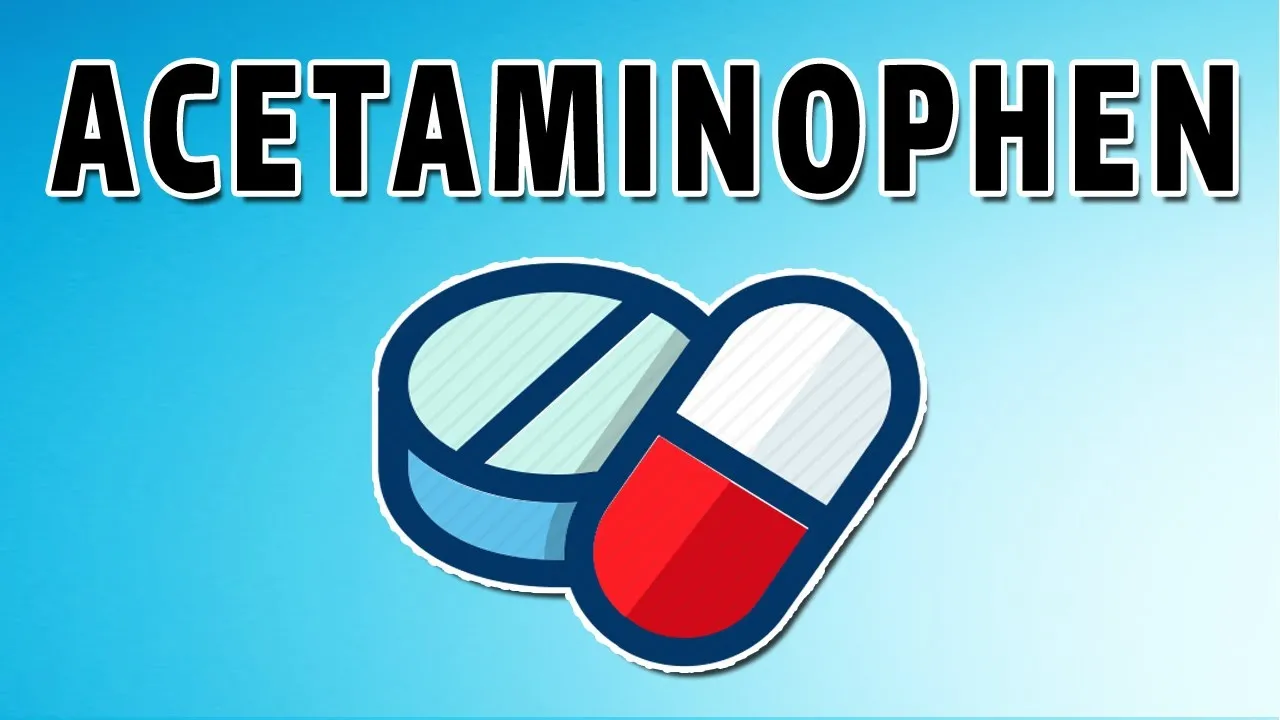
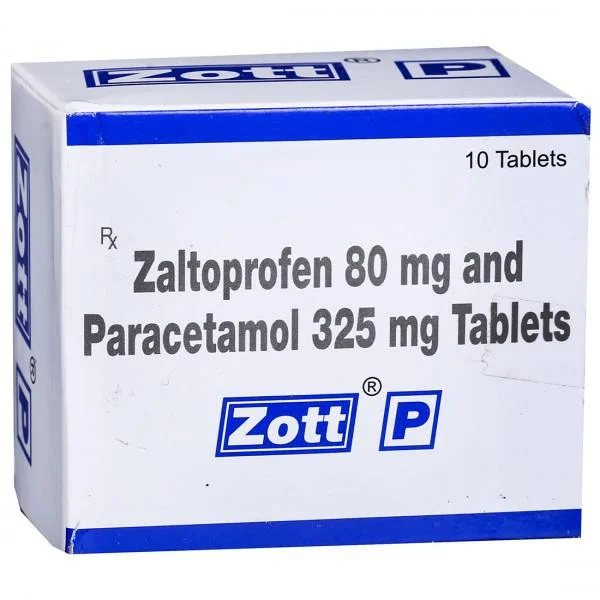
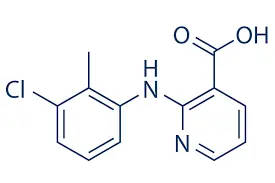
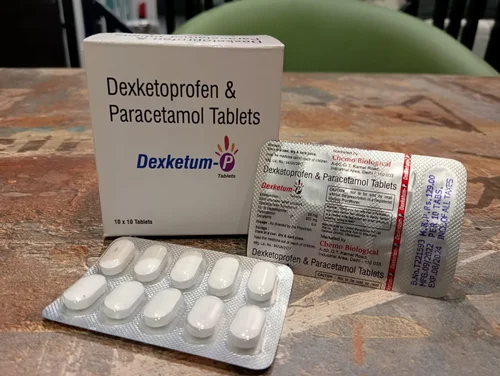
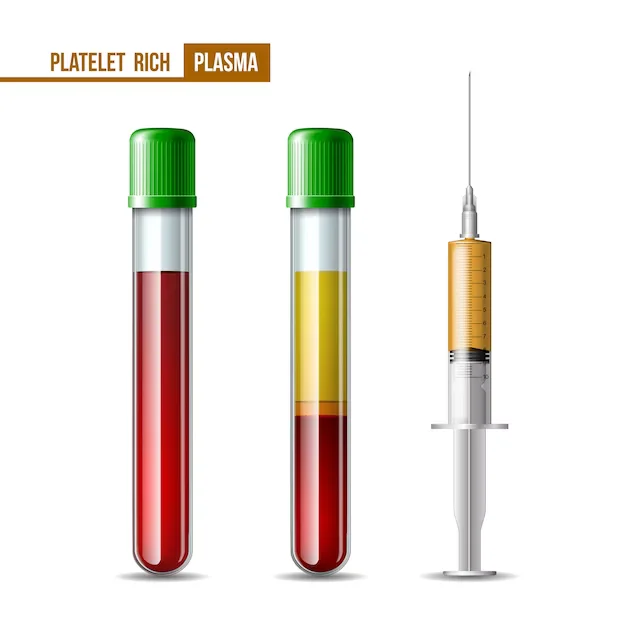
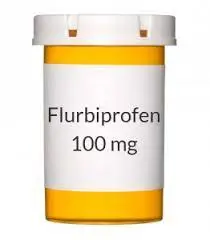

12 Comments